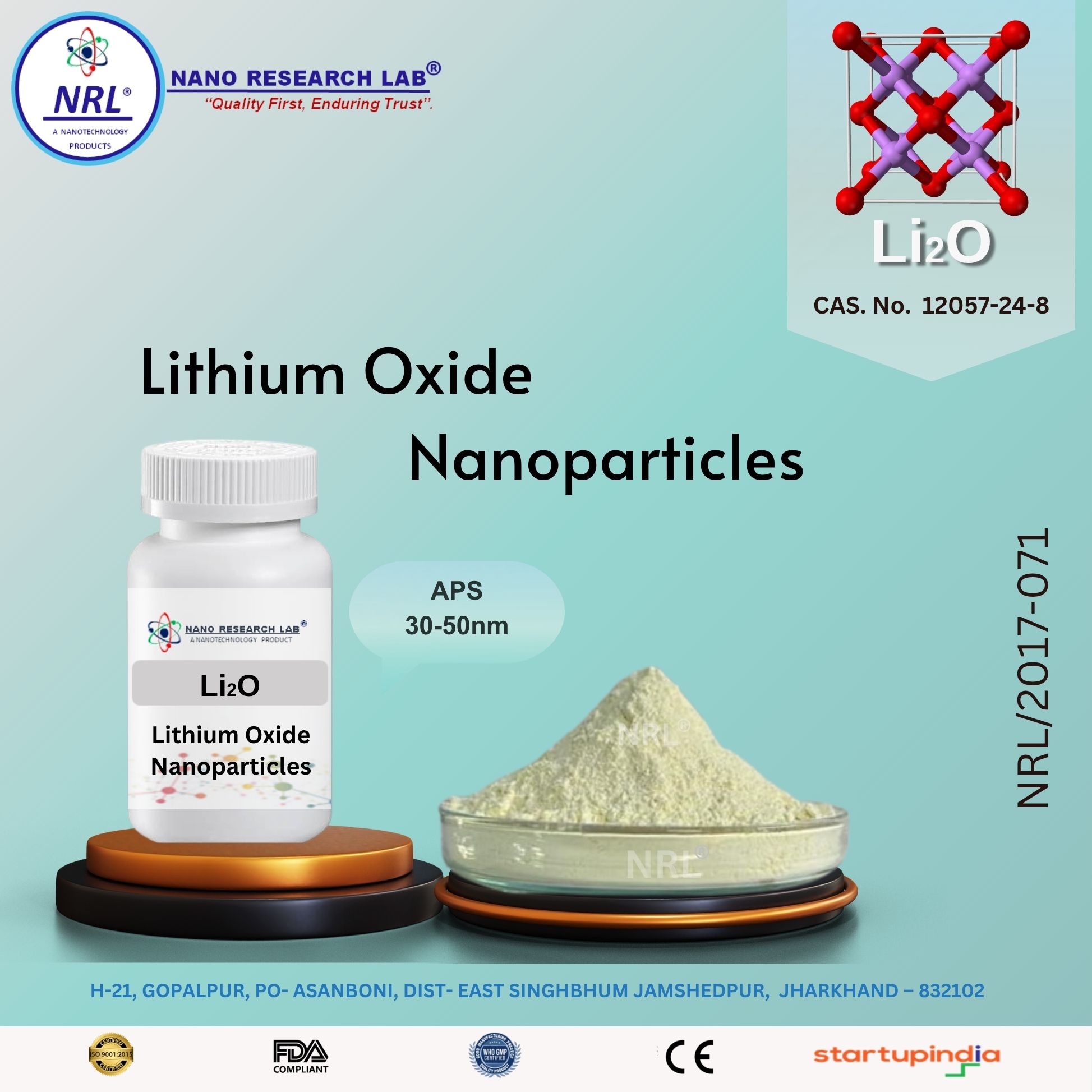
Lithium Oxide Nanopowder/Nanopowder ( Li₂O, 30-50nm, purity 99.5%)
₹4490.00
Lithium Oxide Nanoparticles / Nanopowder (Li₂O, 30–50 nm, Purity 99.5%)
⚙️ Technical Specifications
Property | Specification |
|---|---|
Product Name | Lithium Oxide Nanoparticles / Nanopowder |
Chemical Formula | Li₂O |
Purity | ≥ 99.5% |
Particle Size | 30–50 nm |
Appearance | White to off-white fine powder |
Crystal Structure | Cubic (Antifluorite structure) |
Density | 2.01 g/cm³ |
Melting Point | ~1,430°C |
Solubility | Reacts with water to form LiOH; soluble in acids |
Morphology | Spherical / fine polycrystalline nanoparticles |
CAS Number | 12057-24-8 |
🌟 Key Features
High purity (≥99.5%) and nano-scale particle size (30–50 nm)
Excellent ionic conductivity and chemical reactivity
High thermal stability and electrochemical activity
Ideal for energy storage, ceramics, and glass applications
Reactive toward moisture; handle under dry and inert conditions
Easy to disperse in non-aqueous solvents and composites
🔬 Applications (in Detail)
1. Energy Storage & Batteries
Used as a precursor material for lithium-ion battery cathodes and solid electrolytes.
Enhances ionic conductivity and charge–discharge efficiency.
Plays a key role in lithium-air and solid-state battery research.
2. Ceramics & Glass
Acts as a flux and stabilizer in ceramic and glass production.
Lowers melting temperature and improves mechanical and optical properties.
Used in optical glass, heat-resistant ceramics, and glaze formulations.
3. Catalysis
Serves as a catalyst and promoter in organic synthesis and industrial chemical reactions.
Involved in polymerization, oxidation, and hydrogenation processes.
4. Electronics & Coatings
Used in electronic ceramics, thin-film coatings, and solid electrolytes.
Improves conductivity, insulation, and stability in microelectronic applications.
5. Nuclear & Fusion Research
Acts as a tritium breeder material in nuclear fusion reactors.
Valuable for research in advanced nuclear energy systems due to high lithium content.
6. Research & Advanced Materials
Extensively used in nanomaterial synthesis, solid-state chemistry, and materials science research.
Serves as a precursor for complex lithium compounds and composite nanostructures.
⚠️ Handling Precautions
Highly reactive with water and CO₂ — store under dry, inert atmosphere (Ar/N₂).
Use appropriate personal protective equipment (PPE).
Avoid exposure to moisture or humid environments during handling and storage.
